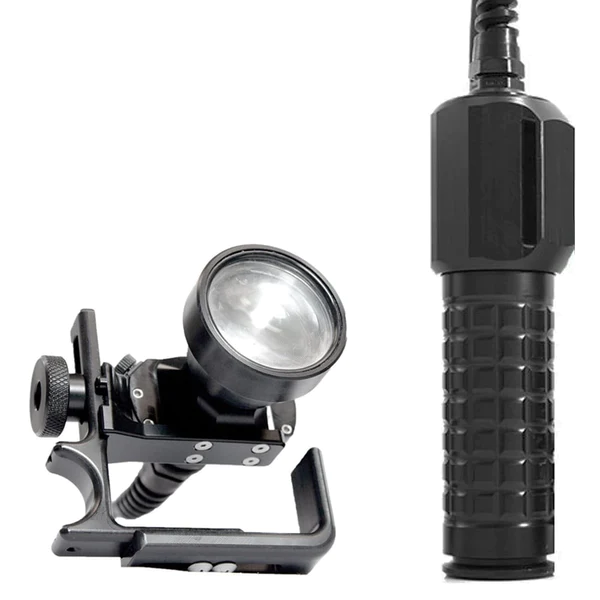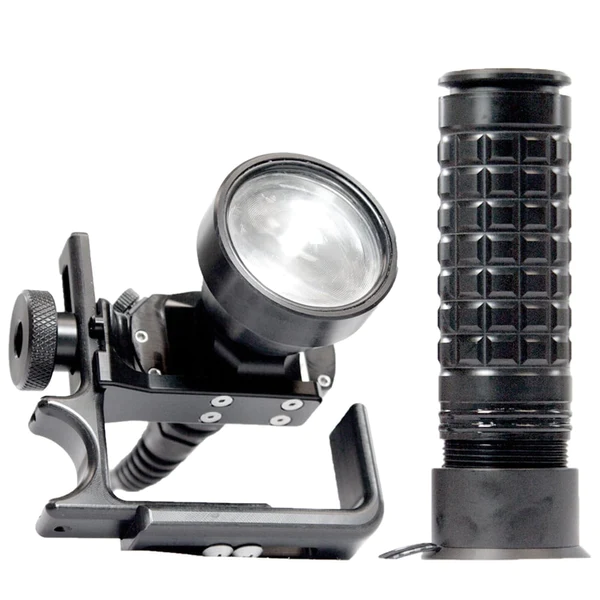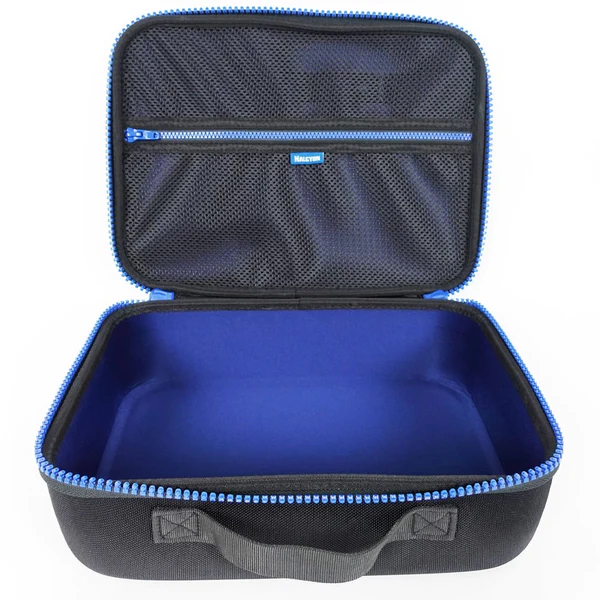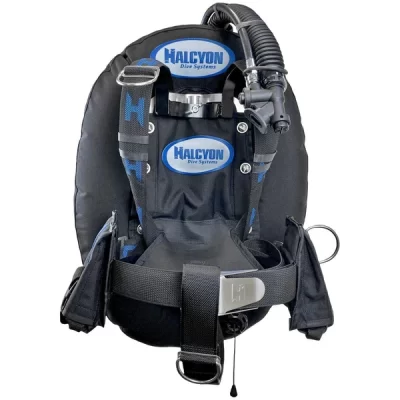Halcyon Flare EXP Light Overview
The Halcyon Flare EXP Light is a compact, fixed-focus version of the Halcyon Focus light, delivering the same performance in a more streamlined design.
Ideal for divers seeking a reliable primary light, the Flare EXP comes with a standard cord and offers outstanding brightness. It’s perfect for both demanding cave dives and relaxed reef explorations. With enough power to handle extreme conditions, even at half power, it’s versatile for various diving scenarios.
Key Features of Halcyon Flare EXP Light
- 3-phase magnetic power switch: Full, half, off settings for easy control.
- Isolated LED core and driver: Protected by three sealed compartments for reliability.
- Ergonomic adjustable handle: Provides comfort during use.
- Lightweight battery pack: Small footprint and easy to carry.
- Portable charger: Convenient recharging on the go.
- Auto shut-down: Automatically powers off when the battery is low.
- Overheat protection: Ensures safe operation in challenging environments.
Halcyon Flare EXP Light Specifications
- Burn Time: Approx. 5 hours on high, 10 hours on low
- Light Output:
- 11,500 lux at 1m on high power
- 1,700 lux at 3m on high power
- Depth Rating: 300m
- Beam Type: Fixed beam
- Harness/Belt Loop: Integrated for easy transport
- Power Settings: High and low power options
- Weight: 1.3kg
- Handle: Adjustable and folds to protect the lens during transport
- Canister: Delrin, 20cm height
- Battery: 5amp Li-ion
- Charging: Easy-to-use cradle included
- Case: Voyager case for secure storage
Halcyon Flare EXP Charger
The Halcyon Flare EXP comes with a compact and practical wall charger, perfect for traveling divers. The charger weighs just 202g and is compatible with worldwide voltage (100-240V), offering a 12.6V output at 1.0A.
Charging Instructions:
- Unscrew the battery from the lamp head.
- Connect the charger to the battery.
- Screw the battery into the charging point.
The charger is provided with the correct plug/adapter for your region based on your order.
Halcyon Diving Light Measurement
Halcyon measures diving lights in lux because it provides a more accurate reading of how much light reaches a specific distance—critical for underwater diving and signaling.
- Lux Measurement: The intensity of light at specific distances (1m, 3m, 5m) is measured to determine effectiveness for general use and signaling.
- Lumens vs. Lux: While lumens measure the total light emitted, lux indicates how much of that light reaches a target at a given distance. Lux decreases as the distance from the light source increases due to light dispersion.







